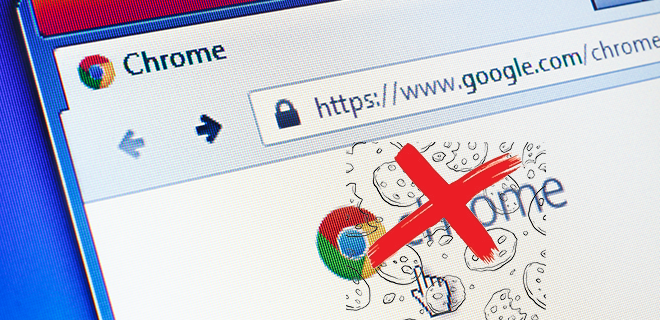
Are marketers crying over their keyboards or getting on with the business of advertising?
After several delays that had many wondering if it would ever happen, Google finally pulled the trigger on its plan to deprecate third-party tracking cookies in its Chrome browsers. Today, Google has implemented Tracking Protection for 30 million Chrome users, or about 1% of its user base.
Is this a cataclysmic event, the end of digital advertising as we know it? Or will the industry find a way to somehow survive?
On the one hand, many marketers saw the writing on the wall back in 2019, when Mozilla began blocking third-party cookies by default and began experimenting with new ways to reach and engage users.
In the years that followed we’ve seen the rise of solutions meant to replace the third-party cookie, including myriad universal IDs, seller-defined audiences, retail media, AI-driven contextual targeting, data clean rooms, and so on. All of them had their moment as the future — the no “it” tactic for the ecosystem.
So far, no tactic has become a de facto approach.
Then again, no approach really had to, as many marketers and agencies (or, ahem, publishers) haven’t felt a particular urgency to forge a cookie-free strategy on a practical level. After all, Google’s announcements of delays came like clockwork, so folks weren’t forced to change.
“Let’s not forget that 30-50% of the web already blocks third-party cookies in Safari and Firefox by default, and that has yet to spur meaningful adoption of third-party cookieless solutions from brands and agencies,” said Alexandra Theriault, Lotame’ Chief Growth Officer. “Google adding 1% of their piece of the pie isn’t going to drive the intended reaction necessary to prepare the industry for the end of the year.”
But to others, today is momentous, as it will usher in a new era for the industry.
“The removal of 1% of third-party cookie tracking has the potential to significantly impact advertisers and the overarching digital ad ecosystem,” said Jeremy Haft, CRO of Digital Remedy, Performance Marketing Partner for Brands and Agencies.
He envisions a spate of innovation led by tech providers and ad companies, especially as attribution and personalization take a hit. Necessity being the mother of invention and all that.
But, there’s a catch, Haft suspects Google will back off from full deprecation if its revenue takes a significant hit.
Terry Guyton-Bradley, Senior Director of Advertising Technology at Forbes agrees. “I venture to say that the advertising industry is one of those industries that is too big to fail. No one has consolidated around a replacement solution. Agencies are continuing as status quo and publishers are working to find individual solutions that will work for their data environments. Although Google has hypothetically drawn a line in the sand, they are doing it in a way that will allow them to pull back if the results are not acceptable. We won’t crash and burn.”
Given the current regulatory climate, it’s also likely that the proposed timeline for a full cookie cutoff could shift.
“Encouragingly, this firing pistol signals Google’s intent to stick to the timeline agreed with the UK’s CMA. However, regulatory hurdles and technological readiness challenges may result in the timeline moving again,” shared Sergii Denysenko, CEO, MGID. “Anyone serious about preparing themselves for the cookieless future must explore alternatives such as contextual and UID-based targeting sooner rather than later. ”
A Good Day for Privacy
It’s hard to deny that for consumers who resent brands knowing too much about them, it’s a good day.
Google more or less invented surveillance capitalism (an invention that the police found very beneficial) and gaining a modicum of privacy back feels good.
Respect for privacy is an important step for building consumer trust, and may even invoke more participation in advertising if consumers feel respected.
“The development underscores the escalating concerns for privacy among both advertisers and end-users, leaving Google with no choice but to address the issue head-on. While navigating this transition poses a considerable challenge, it marks a crucial first step in adapting to the evolving landscape,” said Mateusz Jedrocha, VP, of Branding Solutions at Adlook.
Baby Steps Lead to Big Leaps
It’s hard to envision how the additional 1% of cookie-free users will radicalize the industry in the short term, as Lotame’s Theriault points out, but big leaps aren’t possible until baby steps are mastered. For many, this move is the impetus for finally taking the plunge.
“We view the initial 1% deprecation of cookies as a crucial first step in assessing the viability of a cookieless environment. This phase allows us to perform essential tests and begin refining our benchmarks and delivery metrics for branding campaigns in a world without third-party cookies. However, we believe that a gradual and transparent expansion of cookieless traffic is necessary for a comprehensive understanding and adaptation of this new landscape,” explained Jedrocha.
33Across President, Paull Bell agrees. But, he also feels that phase 2 of the cookie crackdown could present many challenges.
Of course, this future will only happen if Google doesn’t change its mind again.